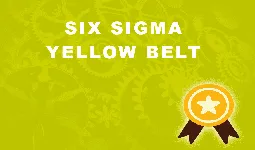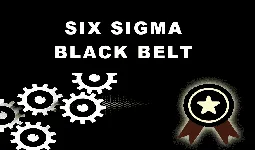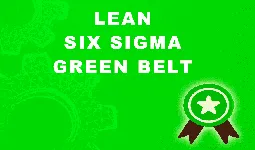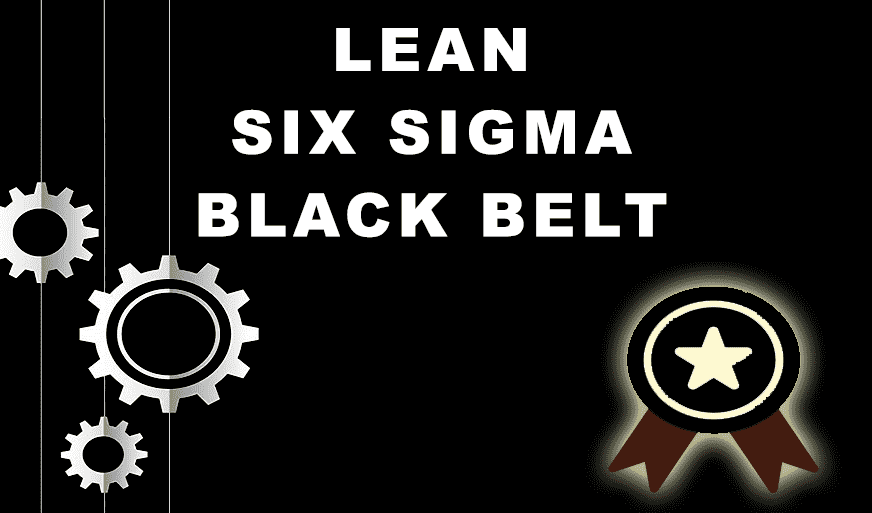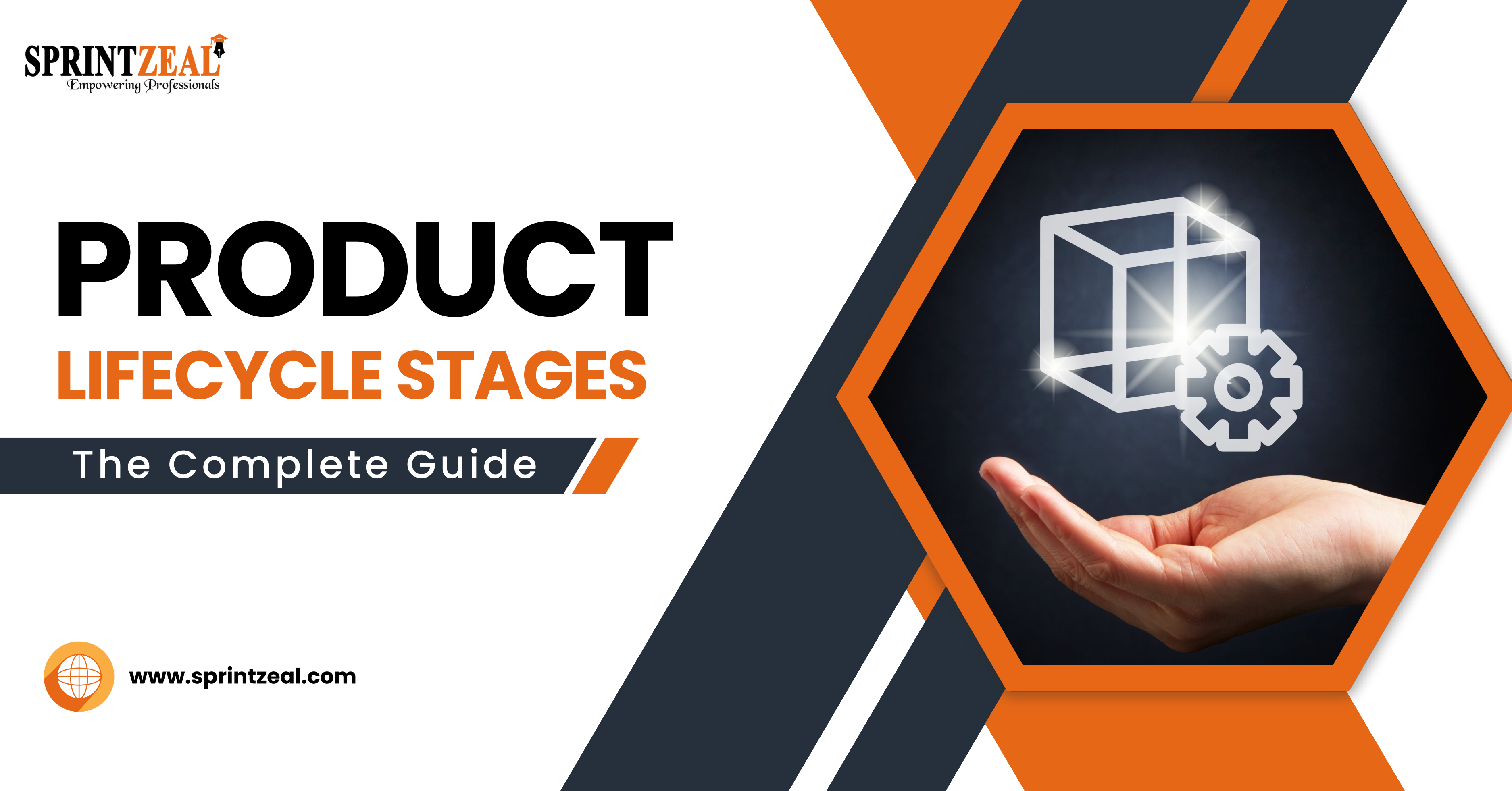8 Wastes of Lean - Strategies for Identification and Elimination
-
 By Nchumbeni Yanthan
By Nchumbeni Yanthan - Published on Dec 27 2023

Table of Contents
- Introduction to Waste in Lean
- Importance of Waste Elimination in Lean
- Identification of Lean Wastes
- Steps to Eliminate 8 Wastes of Lean
- Tools for Waste Elimination
- Creating a Lean Culture
- Strategies for Overcoming Challenges in Waste Elimination
- Propel Your Lean Skills Forward with Sprintzeal
- Encouragement for Implementing Lean Principles
- FAQs
Introduction to Waste in Lean
Waste in Lean, often addressed through Lean Waste Management, refers to any activity or process that does not contribute value to the end product or service. Understanding and eliminating waste is foundational to Lean methodologies. By identifying and minimizing non-value-added activities, organizations can enhance efficiency and deliver more value to customers.
This article explores the fundamental principles behind the 8 wastes of lean, setting the stage for an in-depth understanding of its various forms and the strategies to eliminate them, emphasizing the significance of addressing the 8 wastes of lean manufacturing.
Importance of Waste Elimination in Lean
The significance of waste elimination in Lean methodologies cannot be overstated, as it serves as a backbone for various strategic imperatives. Minimizing waste is not merely a goal but a crucial component for achieving operational efficiency, cost reduction, and heightened quality in products or services.
Waste elimination, particularly addressing the 8 wastes of Lean, plays a pivotal role in enhancing customer satisfaction by ensuring that resources are allocated judiciously, processes are streamlined, and overall organizational performance attains a competitive edge in the market.
By systematically identifying and eliminating waste, organizations position themselves for sustained success and resilience in dynamic business environments. The principles of Lean Management guide this strategic approach.
Overview of the 8 Waste Types of Lean
Within Lean philosophy, the identification and classification of 8 wastes of Lean is crucial for targeted elimination.
These 8 types of waste in lean include defects, overproduction, waiting, non-utilized talent, transportation, inventory, motion, and extra processing. Each waste type has specific characteristics that impact organizational processes differently.
Identification of Lean Wastes
Effectively identifying Lean wastes including the 8 forms of waste, is a foundational skill for practitioners. In the pursuit of Lean efficiency, pinpointing wastes is a crucial step that involves:

Gemba Walks:
Conducting Gemba walks to observe operations firsthand, gaining insights into the actual flow of work.
Value Stream Mapping (VSM):
Utilizing VSM to visually represent the entire process, shedding light on areas where waste may manifest.
Employee Engagement:
Actively engaging employees at all levels, tapping into their insights and experiences to uncover hidden inefficiencies.
Data Analysis:
Analyzing data and metrics to identify areas of overproduction, excess inventory, unnecessary motion, and other forms of waste.
Feedback Mechanism:
Establishing a robust feedback mechanism for continuous review of observations, fostering a culture of ongoing improvement.
By incorporating these methods, organizations can systematically identify and categorize 8 wastes of Lean, paving the way for targeted elimination and streamlined processes.
Steps to Eliminate 8 Wastes of Lean
The systematic elimination of the identified wastes involves a step-by-step approach.

Step 1: Assessment
Conduct a thorough assessment to identify the eight wastes in your organization, evaluating their impact on efficiency, cost, and goals.
Step 2: Prioritization
Prioritize identified wastes based on severity and influence for a focused and strategic approach.
Step 3: Strategic Planning
Develop a detailed plan aligning actions with Lean principles for effective waste elimination.
Step 4: Implementation
Execute planned actions systematically, leveraging Lean methodologies for efficient waste reduction.
Step 5: Employee Involvement
Actively involve employees at all levels, fostering a culture of shared responsibility and ideas.
Step 6: Technology Integration
Incorporate technology for data-driven insights and process monitoring, enhancing overall efficiency.
Step 7: Continuous Monitoring
Establish mechanisms for ongoing monitoring to track progress and identify new areas for waste reduction, ensuring adaptability.
Tools for Waste Elimination
A toolkit of Lean methodologies and techniques is available to practitioners for the systematic elimination of waste. These tools include;
- 5S Methodology: Organizes the workplace for efficiency.
- Kanban Systems: Streamlines workflows visually.
- Value Stream Mapping (VSM): Identifies and removes non-value-added activities.
- Poka-yoke (Mistake-Proofing): Prevents errors, reducing defects.
- Andon Systems: Offer real-time visibility for issue resolution.
- Root Cause Analysis (RCA): Pinpoints causes of waste for targeted solutions.
- Continuous Improvement (Kaizen): Fosters ongoing enhancement.
- Just-in-Time (JIT) Production: Minimizes inventory waste.
- Overall Equipment Effectiveness (OEE): Assesses machinery efficiency, reducing downtime.
The tools empower organizations to systematically eliminate waste and optimize operations.
Creating a Lean Culture
Fostering a Lean culture is vital for sustained waste elimination and operational excellence. This involves promoting collaboration, continuous improvement, and employee involvement within the organization.
Encourage teams to identify and eliminate waste, emphasizing the importance of each individual's contribution to overall improvement.
Provide training on Lean principles and tools, aligning organizational goals with Lean objectives.
Recognize and reward efforts that embrace Lean thinking, reinforcing the value of efficiency.
Establish regular forums for sharing insights and successes, cultivating a culture where continuous improvement becomes ingrained in the organizational DNA.
Strategies for Overcoming Challenges in Waste Elimination
Despite the transformative benefits of waste elimination, organizations often face challenges in the implementation of Lean principles.
The strategies below empower organizations to overcome challenges, creating an environment conducive to waste reduction and operational excellence.
- Foster a culture of continuous improvement to address resistance to change.
- Emphasize the advantages of waste reduction to garner support and commitment.
- Mitigate resource constraints by prioritizing waste elimination initiatives based on their impact.
- Promote employee engagement and empowerment to enhance the effectiveness of waste reduction efforts.
- Implement robust communication channels to ensure stakeholders are informed and aligned with waste elimination goals.
The Role of Continuous Improvement in Lean
Lean Continuous Improvement is integral to the Lean philosophy, emphasizing the ongoing refinement of processes for sustained waste elimination and operational excellence.
It explores the inherent connection between Lean methodologies and the concept of continuous improvement.
By committing to a culture of continuous refinement, organizations can adapt to evolving challenges and ensure long-term success in waste reduction efforts especially the 8 wastes of Lean.
PDCA (Plan-Do-Check-Act) Cycle
The Plan-Do-Check-Act (PDCA) cycle serves as a fundamental framework for continuous improvement within Lean methodologies.
This iterative process empowers practitioners to plan improvements, implement changes, check their impact, and act on the findings. With a detailed exploration of the PDCA cycle, it emphasizes its role in guiding practitioners through the continuous improvement journey.
Propel Your Lean Skills Forward with Sprintzeal
Here are actionable steps to enhance and propel your Lean skills:
Enroll in Lean Six Sigma Certification Courses: Begin by enrolling in Lean Six Sigma certification courses offered by reputable organizations like Sprintzeal. These courses provide structured training, covering essential Lean principles, methodologies, and tools.
Practical Application: Apply Lean principles to real projects to gain hands-on experience.
Continuous Improvement Projects: Participate in continuous improvement initiatives for waste elimination.
Network with Peers: Connect with Lean practitioners through professional networks and forums.
Stay Informed: Stay updated on industry best practices and case studies in Lean.
Mentorship: Seek mentorship from experienced Lean professionals for guidance.
Lean Thinking in Daily Activities: Adopt a Lean mindset in both professional and personal activities.
Contribute to Communities: Engage in Lean communities and forums for collaborative learning.
Document Improvement Metrics: Implement KPIs to measure and document the impact of Lean initiatives.
Advanced Certifications: Pursue advanced Lean certifications including Yellow Belt, Green Belt, Black Belt, for higher expertise.
Share Knowledge: Contribute to knowledge-sharing within your organization.
Sprintzeal offers comprehensive training programs designed to enhance skills and expertise in waste elimination and process optimization. By enrolling in these lean courses, professionals can navigate the nuances of Lean methodologies, equipping themselves for success in waste elimination initiatives.
Encouragement for Implementing Lean Principles
Implementing Lean principles can be a transformative journey for organizations, leading to increased efficiency, productivity, and overall business success. By embracing Lean principles, organizations can optimize processes, reduce waste, and create a culture of continuous improvement.
Align your lean management skills with broader project management methodologies for increased impact. Explore Sprintzeal's Certified Scrum Master training to diversify your skill set. Integrating lean principles enhances your capabilities, providing a versatile toolkit for navigating complex projects. Our comprehensive courses cater to all skill levels. Contact our course expert for inquiries and subscribe newsletters for timely updates directly to your inbox, saving you time and keeping you informed.
FAQs
How can you identify and eliminate waste using Lean?
Identifying and eliminating waste using Lean involves employing techniques like Gemba walks and value stream mapping. By understanding these methods, practitioners can effectively spot inefficiencies and implement Lean methodologies for waste reduction.
How do you identify 8 wastes?
Recognizing the eighth type of waste in Lean requires a deep understanding of its specific characteristics within organizational processes.
Utilizing tools and methodologies enhances accuracy in identification, allowing practitioners to categorize and address this waste effectively.
How do you get rid of 8 wastes of Lean?
The systematic elimination of the eight wastes involves a step-by-step approach, including initial assessment and strategic implementation. By following this comprehensive guide, practitioners can successfully get rid of the 8 wastes of lean.
Which are the 8 Lean wastes identified in any activity?
The 8 wastes of lean—defects, overproduction, waiting, non-utilized talent, transportation, inventory, motion, and extra processing; can manifest in various organizational activities. Recognizing and addressing these wastes is essential for achieving optimal operational efficiency.
Subscribe to our Newsletters
Popular Programs
Trending Posts
Quality Management System – QSM Approaches and Methodologies
Last updated on Aug 22 2024
Quality Manager Interview Questions and Answers for 2025
Last updated on Feb 10 2025
A Complete Guide to Product Life Cycle Stages 2025
Last updated on Feb 27 2025
Explaining QMS Documentation Structure: Benefits and Best Practices
Last updated on Aug 28 2024
Quality Assurance vs Quality Control
Last updated on Aug 2 2023
Quality Control Explained – Six Sigma
Last updated on Feb 21 2024
Categories
- Agile Management 54
- AI and Machine Learning 42
- Big Data 53
- Business Management 51
- Cloud Computing 44
- Digital Marketing 56
- Information Security 8
- IT Hardware and Networking 17
- IT Security 103
- IT Service Management 29
- Leadership and Management 1
- Microsoft Program 2
- Other 43
- Programming Language 31
- Project Management 162
- Quality Management 75
- Risk Management 8
- Workplace Skill Building 2
Trending Now
Top Career benefits of Lean Six Sigma Green Belt
ArticleLean methodology, Six Sigma methodology and Lean Six Sigma Explained
ArticleSix Sigma Black Belt Certification – Value and Career Benefits in 2024
ArticlePareto Chart in Six Sigma - Explained
ArticleQuality Management Interview Questions 2024
ArticleSix Sigma Certification Guide - A Professional's Guide
ArticleSix Sigma Yellow Belt Certification - Six Sigma for Beginners
ArticleQuality Control Explained – Six Sigma
ArticleTotal Quality Management - A Complete Guide for Beginners
ArticleQuality Assurance in Six Sigma Explained
ArticleQuality Assurance vs Quality Control
ArticleSix Sigma Certification – Everything you Need to Know About Getting Certified
ArticleLean Six Sigma on Resume for Rewarding Career Benefits
ArticleQuality Manager Interview Questions and Answers for 2025
ebookService Delivery Manager Interview Questions and Answers (With Examples)
ArticleSix Sigma Interview Questions and Answers 2024
ArticleHow to become a Quality Analyst
ArticleA Supply Chain Management Guide to Mastering Logistics End to End
ArticleSenior Quality Manager Interview Questions and Answers 2024
ArticleTop 30 Quality Analyst Interview Questions and Answers 2025
ArticleFinancial Analyst Interview Questions and Answers 2024
ArticleRisk Manager Interview Questions and Answers 2024
ArticleCompliance Manager Interview Questions and Answers 2024
ArticleOperation Manager Interview Questions and Answers
Article5 Lean Continuous Improvement Principles to Supercharge Your Operations
ArticleHow to Become a Quality Manager - Career, Job Scope and Certifications
ArticleEssential Components of a Quality Management System
ArticleSix Sigma Certifications - Reasons Why you Should Get Them
ArticleTop Qualities of a Good Manager and a Leader
ArticleLearn about Statistical Process Control (SPC) and its top applications
ArticleCost of Poor Quality - A Detailed Guide
ArticleImplementing 5S Methodology for Better Work Efficiency
ArticleWhat Is Lean Management?
ArticleBest Six Sigma Books in 2024
ArticleLeadership vs Management - The Ultimate Guide
ArticleQuality Assurance Plan - Six Steps To Quality Assurance Plan
ArticleOperational Planning Creation, Key Elements and its Benefits
ArticleA Complete Guide to Product Life Cycle Stages 2025
ArticleSix Sigma tools for DMAIC Phases
ArticleWhat Is Lean Manufacturing?- An Overview
ArticleThe Lean Continuous Improvement Model: A Comprehensive Guide
ArticleDMAIC vs. DMADV: Key Differences and Choosing the Right Six Sigma Methodology
ArticleA Deep Dive into the Power of Lean Continuous Improvement Process
ArticleLean Continuous Improvement Methods for Business Excellence
ArticleIntroduction to Lean Manufacturing- Definitions, Framework, and More
ArticleUnderstanding the Key Principles of Lean Manufacturing
ArticleSecret to Unlock Organizational Excellence: Stages of Continuous Improvement
ArticleLean Continuous Improvement: A Detailed Guide to Mastering Organizational Quality
ArticleLean Waste Management: The Ultimate Guide 2023
ArticleA Deep Dive into Lean Continuous Improvement Tools
ArticleThe Ultimate Guide to Lean Manufacturing
ArticleUnderstanding Lean Manufacturing's Pros and Cons
ArticleLean Waste Reduction Strategies: Boost Efficiency and Cut Costs
ArticleTop 10 Lean Manufacturing Tools for Optimal Productivity
ArticleBeyond the Basics: Benefits of Lean Continuous Improvement
ArticleWhat are Quality Standards? | A Guide to ISO Standards
Article7 Important Types of Quality Management System
ArticleA Comprehensive Guide to Quality Management Systems
ArticleISO 9001 Standard: Benefits and Certification
ArticleBenefits of QMS Certification for Your Business
ArticleStep-by-Step Implementation Guide to ISO 9001
ArticleThe Ultimate Guide to ISO 9001: Boosting Quality and Certification Success
ArticleQuality Management System – QSM Approaches and Methodologies
ArticleHow to Effectively Implement a Robust Quality Management System?
ArticleExplaining QMS Documentation Structure: Benefits and Best Practices
ArticleWho Needs ISO 9001 Certification and Why?
ArticleKey Elements of ISO 9001:2015 Quality Management System
ArticleOvercoming Common Challenges in ISO 9001 Certification: Tips and Best Practices
ArticleBest Quality Management Tools
ArticleTotal Quality Management (TQM) vs. Six Sigma
ArticleQuality Manager Salary: What Freshers & Experts Earn in 2025
ArticleCertified Scrum Product Owner: Job Roles And Responsibilities
ArticleTips for Continuous Integration Testing: Streamlining QA
Article10 Quality Management Strategies Adopted by Top Managers
Article
